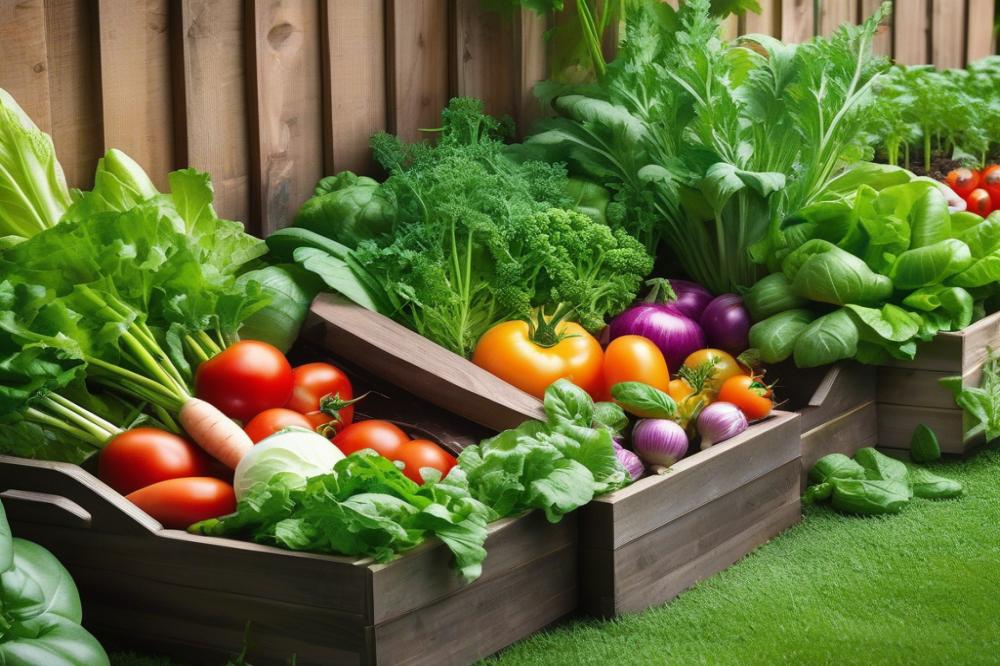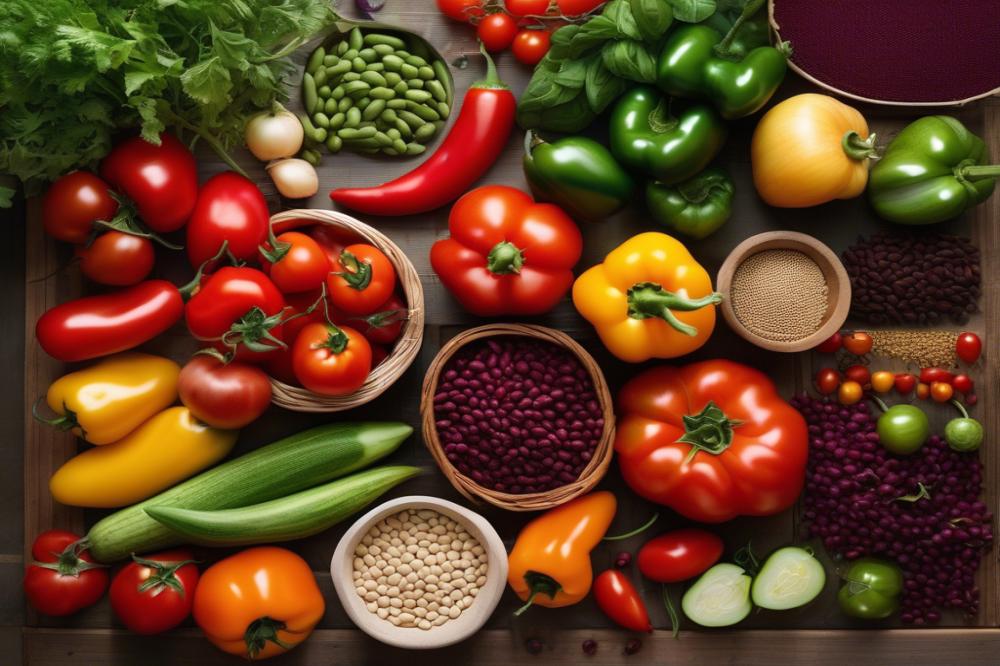Introduction
Sweet 100 Tomatoes are a delightful choice for those who love snacking. Their bite-sized fruits burst with flavor and sweetness that make them hard to resist. These small, round tomatoes are perfect for salads, or you can eat them straight off the vine. Their juicy goodness offers a refreshing contrast to many other snacks available.
growing tomatoes in your garden not only provides you with fresh produce, but it also encourages a fulfilling hobby. As you tend to your plants, you will enjoy the beauty of nature and witness the satisfaction that comes with nurturing something from seed to fruit. Tomatoes are one of the most popular vegetables to grow, and they thrive in various conditions, making them suitable for many gardeners.
Successful cultivation begins with soil preparation. Healthy soil provides essential nutrients that help plants grow robustly. Choose a sunny spot in your yard or opt for container gardening if space is limited. Sunlight is vital for tomatoes; they need at least six hours of direct light each day. Additionally, effective pest management is key to a successful harvest. By keeping an eye on your plants, you can spot any issues before they become serious.
Tomato care involves regular watering and monitoring for any signs of disease or pests. Applying organic methods can enhance the health of your plants and improve the overall taste of your tomatoes. As the growing season progresses, knowing when to harvest tomatoes is crucial. Picking them at the right time ensures maximum flavor and enjoyment.
In the upcoming sections, we will explore more gardening tips specific to cultivating these flavorful tomatoes, helping you create a thriving garden that yields plenty of delicious snacks.
Understanding Sweet 100 Tomatoes


Characteristics of Sweet 100 Tomatoes
Sweet 100s are small, round tomatoes that pack a punch of flavor. Each one typically measures around one inch in diameter. They are known for their juicy texture and vibrant red color. These tomatoes have a robust sweetness that makes them stand out among their peers. Many gardeners appreciate their prolific nature, as these plants can produce numerous fruits throughout the growing season.
Flavor Profile and Size
The flavor profile of these tomatoes is particularly sweet. When bitten into, they release a burst of tangy juice that is delightful. Their small size makes them perfect for snacking. Most children and adults enjoy popping a few into their mouths to savor right off the vine. This sweetness can also enhance the taste of salads, making simple dishes exciting.
Comparison to Other Tomato Varieties
When compared to other varieties, Sweet 100s have a distinct advantage due to their flavor. While beefsteaks offer a meaty texture, these tiny tomatoes provide a refreshing bite. Other cherry varieties may also compete, but few can achieve the same level of sweetness. Each variety has its charm, but they shine in snacking situations.
Ideal Uses in Salads and Snacking
These tomatoes are ideal for fresh salads. Their size allows for easy tossing into any dish. Gardeners often use them in container gardening, thanks to their manageable growth. With proper soil preparation and pest management, they’ll thrive. Look for recipes that highlight their natural sweetness. A simple tomato salad can become a star dish with the addition of Sweet 100s. A sprinkle of salt or a drizzle of olive oil can elevate them even more. Harvesting tomatoes at their peak ripeness ensures the best flavor for any use. Enjoy them as a healthy snack anytime!
Preparing to Grow Sweet 100 Tomatoes


Soil Preparation and Choosing the Right Location
growing tomatoes requires careful soil preparation. First, test your soil pH. Tomatoes prefer a range of 6.0 to 6.8. Mix in compost or manure to enrich the soil. This adds nutrients that help young plants thrive. When selecting a location, find an area that is well-drained. Poor drainage can lead to root rot. Along with drainage, choose a spot that is free from weeds and other plants. These can compete for nutrients and water.
Sunlight Requirements for Optimal Growth
Tomatoes need plenty of sunlight to produce fruit. Aim for at least six hours of direct sunlight each day. Morning sun is best as it dries the leaves early, reducing the risk of diseases. Observing the location during different times of the day is helpful. Shadows from trees or buildings can impact growth. If sunlight is scarce, consider pruning nearby plants to open up the area.
Choosing Between Garden Beds and Container Gardening
When deciding your growing method, think about your space. Garden beds offer more room for roots to spread. If you have limited space, container gardening is a great alternative. Large pots allow for good drainage and can be moved as needed. Both methods have their benefits. Just remember to select adequate size containers if you choose pots. Consistent watering is key in both situations.
Organic Tomato Options and Benefits
Using organic tomatoes can lead to tastier fruits. Organic methods focus on natural fertilizers and pest management. This can reduce the presence of chemicals in your garden. Moreover, organic gardening promotes biodiversity in your plant life. Pest management becomes a matter of introducing beneficial insects, like ladybugs, instead of using sprays. The health of both the plants and the soil improves, making it a rewarding option.
Planting Sweet 100 Tomatoes


When to Plant and Site Selection
Timing matters when growing tomatoes. The best planting period is after the last frost of spring. Choose a location that enjoys full sunlight. A spot receiving at least six to eight hours of sun each day will help your plants thrive. Check your local frost dates before starting. Ideally, warm soil aids germination. An ideal soil temperature is around 70°F.
Transplanting Seedlings or Direct Sowing
You can either transplant seedlings or direct sow seeds outdoors. Starting indoors gives plants a jump start. Use biodegradable pots for easy transfer. When transplanting seedlings, bury them deep in the soil to develop strong roots. Direct sowing can be a quicker method if conditions are right. Make sure to water the soil thoroughly after planting. Keep an eye on your seedlings. They need protection from pests during early growth.
Spacing and Supporting Tomato Plants
Space plants appropriately for optimal air circulation. Each tomato plant should be about two feet apart. This distance allows for healthy growth and prevents overcrowding. Consider using stakes or cages for support. Tomato cages can help keep plants upright and reduce damage from wind or heavy fruit. Maintaining structure in the garden leads to easier harvesting tomatoes later.
Investing time in soil preparation also pays off. Enrich the soil with organic matter before planting. Good soil management improves drainage and nutrient availability. For container gardening, select pots that are at least five gallons. Large containers provide enough space for roots to spread and thrive. Enjoy fresh snacks by ensuring proper care throughout the growing season.
Tomato Care for Sweet 100s
Watering techniques and frequency
Watering can make or break your tomato plants. Start by establishing a consistent routine. A good rule of thumb is to provide deep watering once or twice a week. During hot spells, they may need more frequent watering. Container gardening often requires more attention, as pots can dry out faster. Always check the soil. It should be moist but not soggy. Too much water can lead to root rot. Conversely, under-watering can stress the plants, leading to poor fruit development.
Fertilizing for healthy growth
Regular feeding helps promote growth. Use a balanced fertilizer to encourage strong plants. Organic tomatoes benefit from compost, which adds nutrients and improves soil structure. Start fertilizing when your plants flower. Applying fertilizer every four to six weeks is often suitable. Always follow package instructions for the best results. Over-fertilization can harm the plants as much as under-fertilization. By monitoring your crops closely, you can adjust accordingly.
Essential gardening tips for disease prevention
Disease can sneak into your garden if you’re not careful. Crop rotation is a simple way to minimize risk. Avoid planting tomatoes in the same spot every year. Another tip involves ensuring good air circulation. Space the plants properly to reduce humidity. This can prevent fungal diseases. Watering plants in the morning allows them to dry out during the day. Additionally, removing any infected leaves promptly can protect your healthy plants.
Pest management strategies to protect your crop
Pests can be a significant challenge in growing tomatoes. Regularly inspect your plants for any signs of trouble. Encourage beneficial insects, like ladybugs, which can keep pests in check naturally. Using row covers can also protect young plants from insects. If you notice any damage, treat it early. Organic pest control methods, such as insecticidal soap or neem oil, are generally safe and effective. Always read labels carefully before applying any treatment. Lastly, rotate your crops each season to disrupt pest life cycles, keeping your garden healthy and productive.
Harvesting Sweet 100 Tomatoes
Timing for the Best Flavor and Sweetness
Picking tomatoes at the right time is key to enjoying their full flavor. Ideally, wait until the fruits turn a rich red. They should feel slightly firm yet soft when gently squeezed. The sugar content peaks just before they start to wrinkle. Monitor your plants daily as harvest time approaches. If you delay too long, tomatoes may fall off or be damaged. Understand that ripeness varies depending on weather conditions. Warm days and cool nights often enhance sweetness.
How to Harvest Without Damaging Plants
When it’s time to gather your crop, do so with care. Use scissors or pruning shears to gently cut the stem. Try to avoid pulling on the fruit, as this can harm both the tomato and the plant. Grasp the base of the fruit carefully and make a clean cut. Remove any damaged or rotten tomatoes as you go. This helps prevent disease. It’s also a good idea to wear gloves if you’re dealing with any pests. Not all insects are harmful, but it’s better to practice good pest management.
Storing and Using Harvested Tomatoes
Once you’ve harvested the tomatoes, store them properly to maintain freshness. Leave them at room temperature for a few days if they are still slightly underripe. Aim to keep them out of direct sunlight to prevent spoiling. For longer storage, consider refrigerating them after they fully ripen. Sweet 100 tomatoes are perfect for snacking or adding to salads. Their natural sugars make them a delightful treat. Get creative in the kitchen and toss them in pasta dishes, salsas, or even freeze them for later use. Remember, these little gems shine best when enjoyed fresh!
Final Thoughts on Cultivating Sweet Snacking Tomatoes
Recapping the essential steps to cultivate these delicious, bite-sized treats will help you along your gardening journey. Begin with selecting a sunny location that receives at least six hours of sunlight each day. Next, prepare your soil with rich organic matter to provide nutrients. Planting seeds or seedlings at the right depth is crucial for healthy growth. Watering consistently and monitoring for pests are also important parts of effective tomato care. Pruning your plants will help them thrive and produce more fruit.
Consider adding sweet snacking tomatoes to your garden this season. A small patch can bring joy and flavor to your summertime meals. Fresh tomatoes not only taste better than store-bought options, but they also provide a fun gardening experience. Growing tomatoes gives you the chance to learn about plant care and enjoy the fruits of your labor.
Revel in the benefits of harvesting your own organic tomatoes. There’s something special about picking a tomato right off the vine. It’s a reminder of the efforts put into planting and nurturing each plant. Enjoy these tasty morsels fresh as a snack or in various dishes. Making homegrown tomatoes a part of your life can enhance both your cooking and your health.



